Last Updated on November 24, 2023 by PowersToTravel
The Gypsies, or Roma as they are generally called, are the second largest minority in Romania, and the relationship of majority to minority is a fascinating one. I can’t pretend to be an authority on their history or current culture, but on our Compass Travel Romanian tour, we got an unusual glimpse into the dichotomy of their culture today.
As part of our day trip out from Sighisoara to Biertan, we stopped to visit a gypsy family, that of Victor Clopotar, in the village of Brateiu. Victor’s family is not entirely representative of Romania now, but in many ways his family is typical. Victor is a world-renown coppersmith. He collaborates with the Austria design company, Zerunianandweisz, and creates pieces for the rich and famous, including the Queen of England. If that isn’t an awesome resume, I don’t know what is! Here’s a really good article about the collaboration of Zerunianandweisz with the Roma artisans.
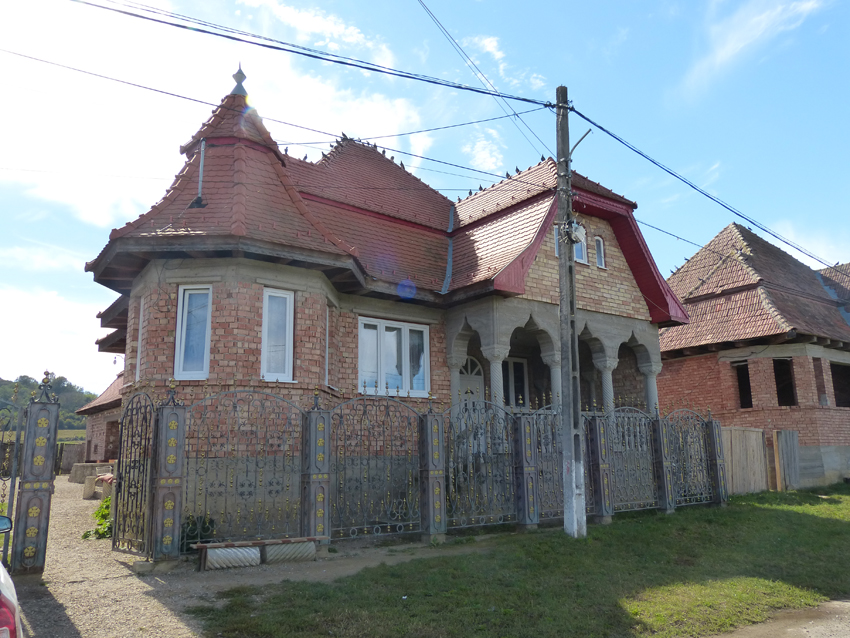
But in other ways he is typical, as he is one of many gypsies who has settled down and built a home. He married while he was still in his teens, and has several children.
We stopped at his fairly large home, met his father who was working in the workshop; he showed us what he was working on. Victor was happy to allow me to take a picture of his father, himself and his wife.
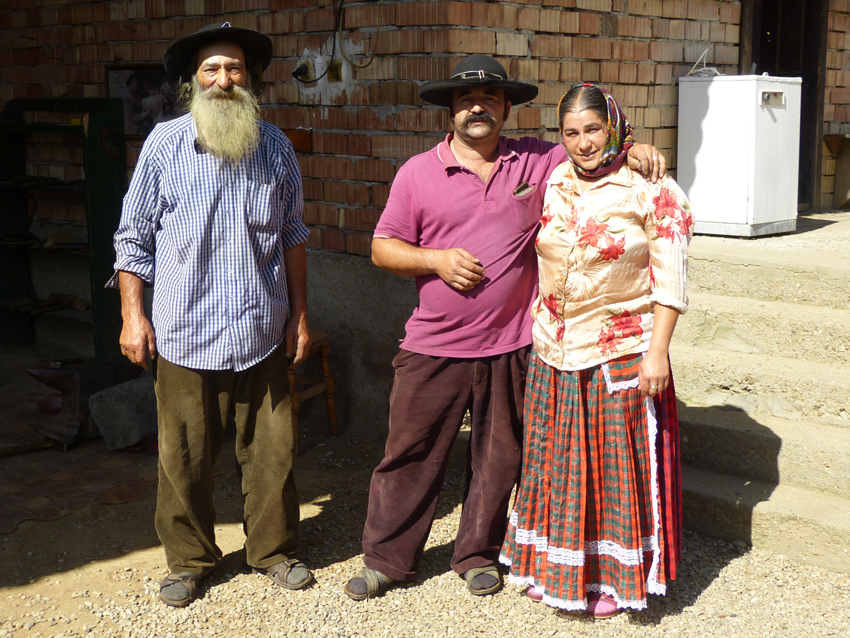
We were invited in for tea, told about Victor’s renown and shown Victor’s awesome resume / catalog. I took a picture of a page, so that I could remember his name and the quality:
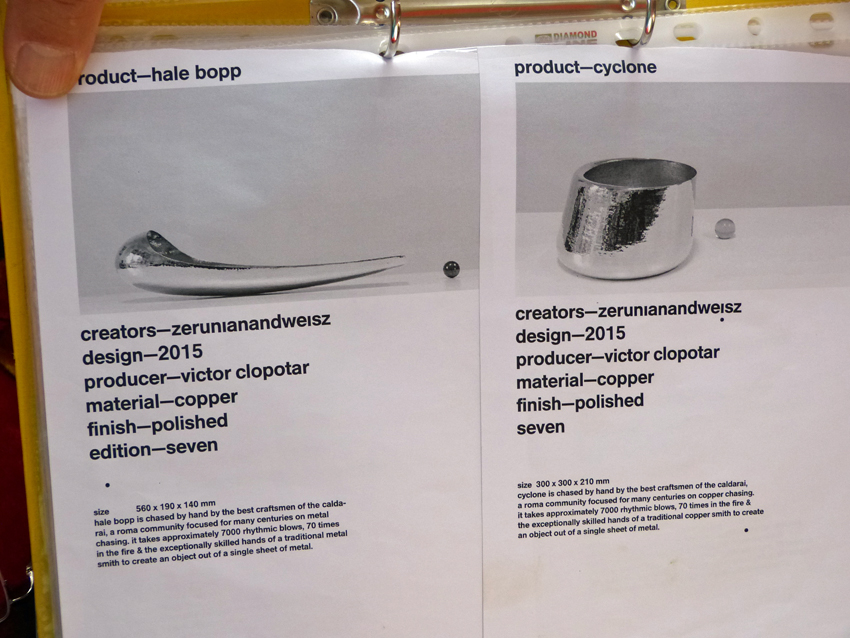
Both Victor and Iulian explained a bit about the Roma history. Before World War II the gypsies were a large minority in Romania and wandered around Romania in their stereotypical wagons. With World War II came the genocide and concentration camps. The gypsies were targeted along with the Jewish community, however the gypsies were more adept at escaping their fate than the Jewish people.
The gypsies had long been persecuted as well, and had learned skills in disappearing, which was easier for them because they were already mobile, and had good horsemanship skills. Theirs was always an independent lifestyle.
While the Jewish people, in their permanent houses, believed that this terrible thing couldn’t possibly happen, and listened to their elders who instructed them to be stoic and wait for it to pass, the Roma people trusted no authority and did their best to disappear into the countryside.
Many succeeded in escaping the Fascists, and however many others did not; they say 36,000 did not.
Following World War II and into the present day, the Roma have been adapting to modern life, and have taken to settling down in communities, not necessarily the communities of the Romanians, but their own gypsy communities, such as the one we found ourselves visiting.
They have been building houses, selling their artwork at the side of roads. They are still quite clearly gypsies in dress and vocation. Are they assimilating? I don’t know.
That day, instead of visiting a gypsy in a caravan, we visited Victor in his house. The house however was unlike any other house I’d seen.
Even the exterior of the home was interesting: see in the background of the photograph of Victor, his wife and father, that the walls have been made of bricks been laid with little mortar, seemingly dry brick upon dry brick and subject to the slightest wind.
Later I asked Iulian, “Why don’t they finish the home, put in the mortar?”
“They can’t afford to. All they can afford are the bricks and the little mortar to put the house together.”
We looked across the street at an unfinished building:
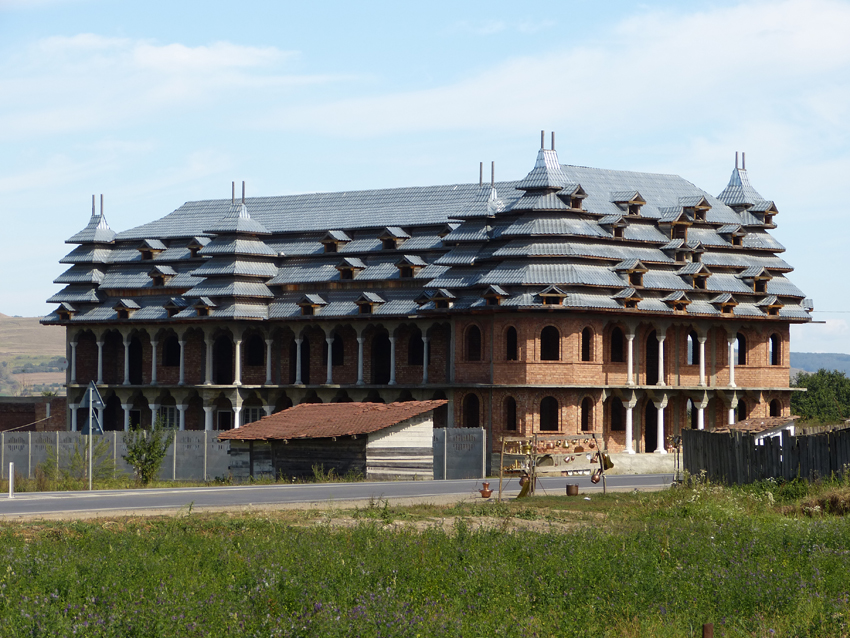
It didn’t seem to make much sense to build such a large ornate building, if one didn’t have the money for the mortar, and not build it section by section, with less attention to the roof, but there it is, true Gypsy-style – “architecture” seen nowhere else in the world!
Here is a really neat picture of finished Roma architecture, from Wikipedia. Wow. I wish we had seen that.
The interior of Victor’s house amazed us as well. The use of extremely bright colors which we would see in the streets, in their clothing, they incorporated into their decor.
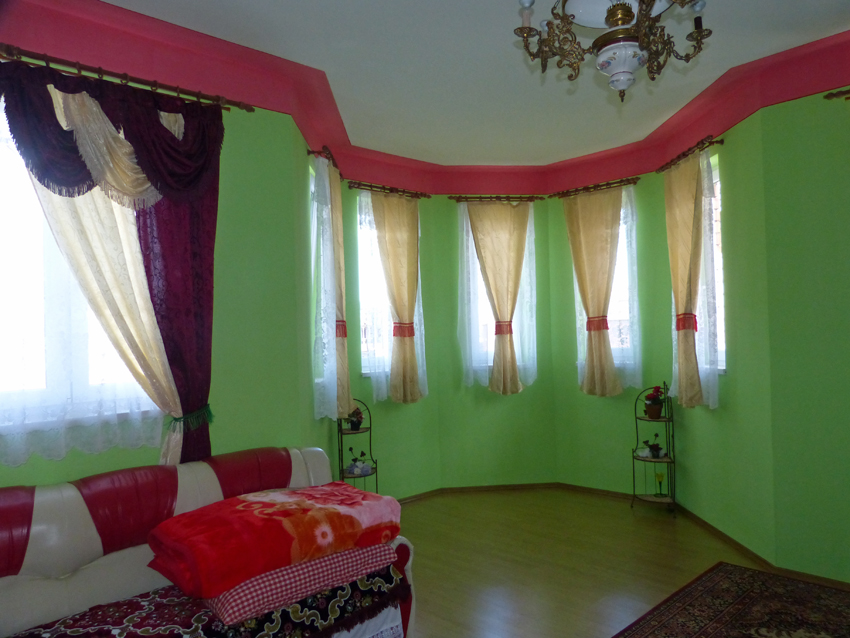
Victor’s wife invited me into her “sales” room, where she dressed me up as a gypsy. While she did so, she talked in a whisper about family: “Do you have children? No? That is good. Don’t have children! I was married when I was twelve. I started having children when I was seventeen. Don’t have children!”
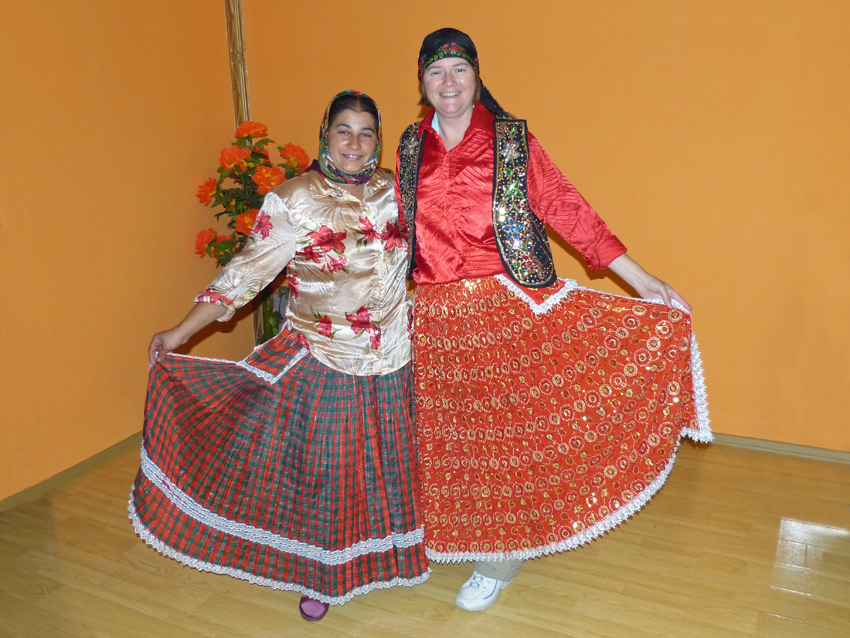
The goal was to sell me these clothes, but sadly I could think of no occasion when I would dress in a gypsy outfit. I smilingly declined. I knew that the travel agency had paid Victor for the visit, so I knew I wasn’t obliged and I just couldn’t see buying and carrying the weight of additional clothes for the next 25 days through Europe.
We headed outside, and found a sales stand set up at the roadside. We met two of Victor’s children. Ah, now this is more like what I would want to spend my money on – handmade copper pots which could be used and displayed.
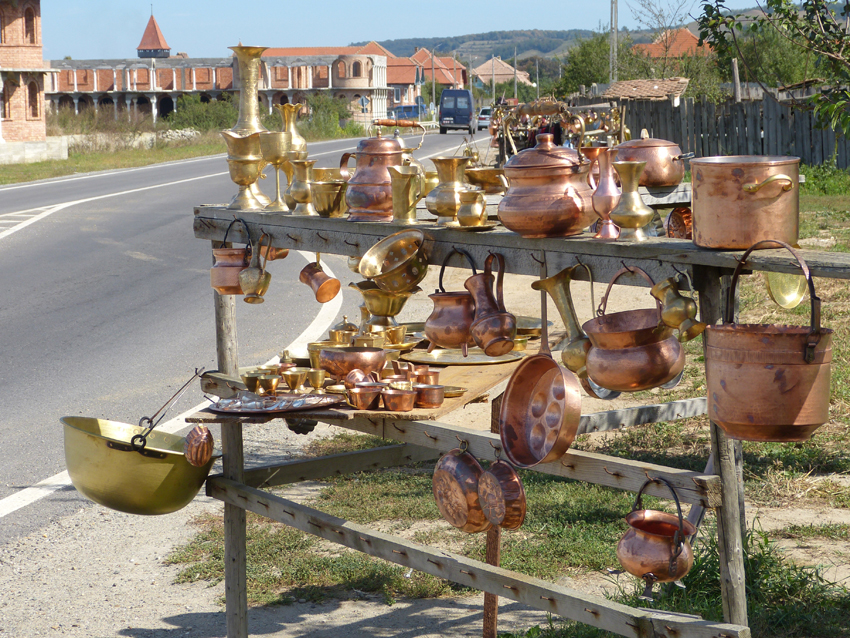
I carefully chose a small brass oil decanter, the smallest I could find (for weight reasons), and it turned out to be $48! Oh my, well, I had chosen it, and felt better about buying it than a less expensive skirt I wouldn’t wear!
Turns out all the products were the work of Victor’s son, who is naturally a smith. Well, I know I didn’t buy a Victor Clopotar piece suitable for the Queen of England, however I did buy a piece from an artisan who may someday follow in his father’s footsteps.
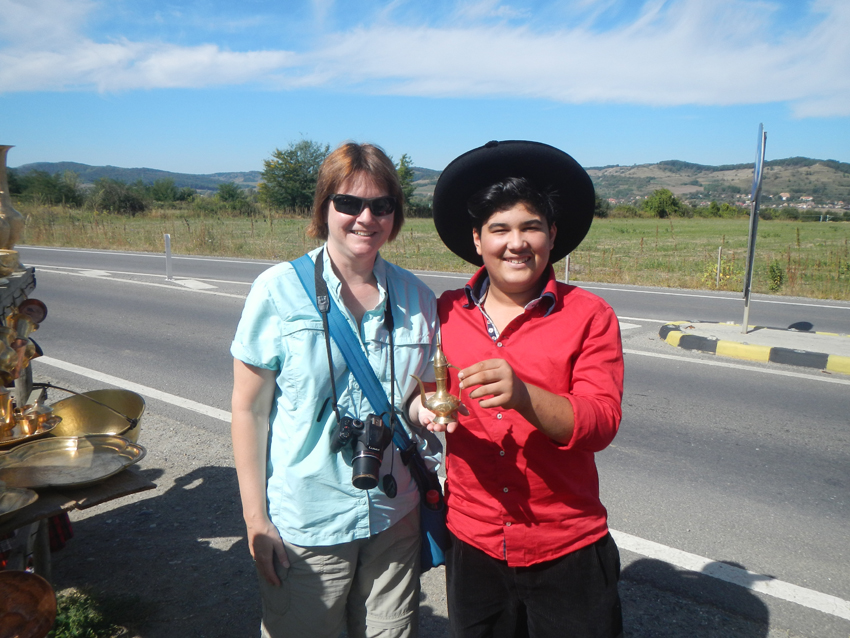
I was a little surprised by Iulian’s attitudes towards the gypsies throughout our trip around Romania. In general, Iulian seemed to be a conservative, somewhat prejudicial person, with negative feelings towards people not like himself. (He may read this someday, and if this is not true, all I can say is that it appeared to us to be so.) For that reason, I would have expected him to sneer at the poverty and the unique culture of such a minority, however he seemed to show great empathy towards them, understanding. It was as if the Roma are Romania’s minority and therefore are Romanians and to be respected, although once again, I don’t know what was in his mind.
I didn’t get a gypsy fortune that day, but I did get a gypsy’s advice: “Don’t have children!” Since I am 56 and have no children, I don’t think I have to worry about it!
Read more about the Roma on Wikipedia; it’s worth the time.
The next step in our Romania Itinerary
Day 10 – Unexpected history at Cetatea (Citadel) Rupea
Check out my key Romania article
Romania Travel Blog – Itinerary, Planning & Diabetic Travel Tips





